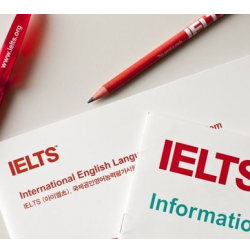How to Provide Positive, Meaningful Feedback to Your Foreign Language Students

۱۴ بهمن ۱۳۹۶
How to Provide Positive, Meaningful Feedback to Your Foreign Language Students:
To correct or not to correct? That is the question…
Whether ‘tis better to provide the correct answer,
Or to give enough information so that students have the tools
To correct their own mistakes themselves, and therein–we hope–to end them.
Ah, to dream…
Teaching is an art, and nowhere more so than in giving feedback in language classes. The feedback you give—and how you deliver it—can be the difference between motivating a student who has an “a-ha” moment thanks to your correction and unintentionally discouraging a student who then becomes disengaged or afraid. It’s a really powerful teaching tool when used correctly. So how, when and what type of language feedback should you give to be a more effective language instructor?
We’re going to look at six types of corrective feedback, four types of positive language feedback, and then specific ways you can provide meaningful feedback in oral, written, reading and listening activities.
What Is Language Feedback?
Language feedback is information provided to a student by an instructor or by another student that helps both that student and others in the classroom understand how well they are using the target language. It can be used to give a general indication of proficiency in any particular skill (speaking, writing, listening or reading) or it can be used to hone in on specific topics (grammar, vocabulary, etc.) that are new or are in need of review. Everything that happens in a language classroom, from spoken to non-spoken acts, can be used and understood as language feedback.
Non-verbal acts could include gestures, body language, facial expressions (smiles or frowns, for example) or the use of red pens while grading.
Verbal acts could be emphasis or intonation when speaking, positive/negative reinforcement or explicit correction.
Without language feedback, students cannot learn the target language because they would otherwise have no idea whether or not they are using it correctly! Thus language feedback indicates whether they are on the correct path, whether they understand a specific point or not, and, if not, how to use the language properly.
What Are Good Guidelines for Successfully Providing Language Feedback?
Whether in a language classroom or in a natural second-language conversation, language feedback gives the interlocutor an indication of our attitude toward him or her:
Are we listening?
Do we understand?
Are we interested in what is being said?
Do we care?
Because of this, we should be sensitive to the types of language feedback that we give and how often we do so overtly, i.e., verbally.
Non-verbal feedback is, at times, outside of our control, as it’s often reactive to the moment. We might, for example, sigh or roll our eyes before we realize we are doing it, while it takes an additional moment to come up with what we want to say and then say it out loud.
Inside of a language classroom, giving too much language feedback, especially too much negative feedback, can discourage our students and keep them from wanting to speak up or even to continue learning the target language with us. Thus, correctly using language feedback can increase our students’ motivation to learn, while incorrect uses of feedback can decrease their motivation.
A good general rule of thumb is to be selective in how much feedback you give a beginner student, while you should give much more to an advanced learner. Why is this so?
Beginners
Beginning students will make a lot of mistakes, sometimes because they simply don’t remember a rule, word or ending, and sometimes because they are—enthusiastically—trying to push themselves beyond what they can comfortably accomplish at that stage. We don’t want to stifle their enthusiasm, but we want to ensure that they are understood. What should be done?
In essence, the best rule is to stop a student when whatever is said is completely incomprehensible. If you reach a point when you, the instructor, don’t understand at all what’s being said or what the student is trying to say, stop, give feedback asking for clarification or correction, and then continue.
If the student makes a significant mistake with the topic being taught that day (grammatical endings, verbal agreement, tense, vocabulary), that would be a good place to stop as well. That is the topic of the day, so it should be emphasized and the mistake fixed.
Otherwise, allow the student to continue, consider correcting some of the more egregious mistakes after the student has completed his or her utterance, and let the rest slide. There will be another day to correct those additional mistakes, and they will reappear soon enough!
Advanced learners
What about advanced learners? At this point, they should have a firm grasp on grammar, vocabulary, usage and style, and their goal is likely full proficiency with few or no mistakes; i.e., they are trying to work at the level of a native or near-native speaker. This means that very few mistakes should be tolerated, and an instructor (or a peer) should try to provide feedback to fix most, if not all of them.
If an error occurs, something beyond the knowledge of the student—a new and complicated grammatical construction, for example, an exception to spelling, case ending, usage, etc.—then this should be used as a teachable moment for the entire class.
Overall, you don’t want the amount of language feedback to be overwhelming for your students. Give them what they can handle, what they can learn from and what they can remember/use at that stage of their education, so that they can move forward with learning the target language.
Mistakes vs. errors
Note that you do need to make a distinction between mistakes and errors when considering how to provide feedback.
Mistakes are performance errors, where the learner knows the correct rule, word, ending, etc., but in this instance has performed incorrectly. As an instructor, you want to direct your language feedback toward correcting mistakes because this is what your students should be able to do in the target language.
Errors occur in the learner’s interlanguage because a learner does not yet know the correct rule, word, ending, etc., and they are making a guess, often based in combination with their native language and their current knowledge of the target language. The knowledge to perform correctly has not yet been imparted to the learner in this instance.
Unless you don’t understand what a learner is saying or writing, especially at the beginning level, these do not need your immediate attention. At the more advanced levels, it depends on the error and what you want to accomplish in that particular class or lesson.
The 6 Basic Types of Corrective Language Feedback
There are six generally agreed upon types of corrective language feedback, where the goal is to help students be accurate in their active use of the language by giving them information as to what is correct (positive feedback) and what is not correct (negative feedback) in the target language: clarification requests, elicitation, explicit correction, metalinguistic feedback, recasting and repetition.
- Clarification requests are where you indicate to the learner that there is a problem with the language output: The answer was not understood at all. There was either a mistake in the answer that could lead to different understandings (and therefore, clarification is needed) or there is a grammatical or usage mistake that should be corrected for accuracy.
- Elicitation is where after hearing the learner’s output, you repeat the sentence, pausing at the place where a mistake was made, thus giving the learner an opportunity to correct his or her own mistake by concentrating only on that word, phrase or grammatical construction.
- Explicit correction is where you simply provide the correct answer. This should generally be reserved until after several failed attempts by the learner to provide the correct output and when no other students are able to help. You should accompany it with an explanation of how to form the correct response, whether this is review or new information.
- Metalinguistic feedback involves explicitly stating that there is a mistake in the output and asking the student who made it or a classmate to find and correct the mistake.
- Recasting is where you repeat and reform the learner’s output, correcting the mistake along the way. Ideally the student or all the students will repeat the recast at that time in order to provide reinforcement of the correct language form.
- Repetition is where you repeat exactly what the learner has uttered, somehow emphasizing the mistake that the learner has made. This will indicate where the mistake is located, giving the learner a chance to focus on that particular part of the utterance and fix it.
In addition to instructor-led corrective feedback, peer-led corrective feedback is also possible. This is where students, working in pairs or in groups, help each other to learn by giving appropriate prompts, asking appropriate questions or providing appropriate explanations, when necessary.
https://www.fluentu.com/blog/educator/language-feedback/


